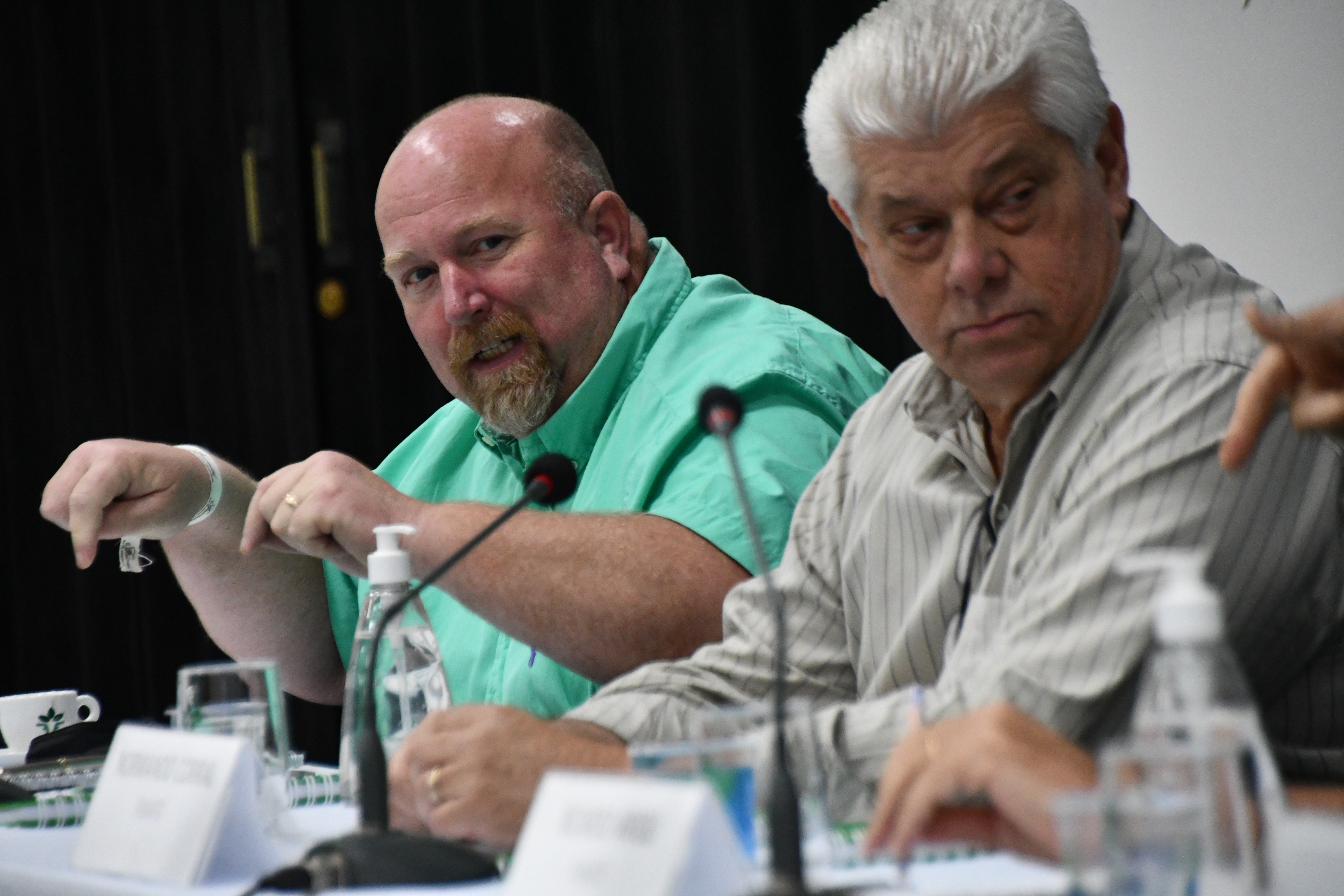
ISA President Robb Ewoldt (left) responds to a question during discussions with Brazilian ag officials held Feb. 10 in Cuiaba. The meeting was hosted by representatives of Agrihub of the Farmers’ Federation of the state of Mato Grosso (FAMATO), including Vilmondes Tomain (foreground), the association’s director of administrative finance. (Photo credit: Aaron Putze/Iowa Soybean Association)
Projections for monstrous Brazilian soy crop dialed back because of drought
February 24, 2022 | Aaron Putze, APR
CUIABA, BRAZIL — It’s often said big soybean crops get bigger.
Not true this year in Brazil, said several ag officials with first-hand knowledge of harvest progress in discussions last week with Iowa Soybean Association (ISA) leaders in Cuiaba.
Initial yield reports from the country’s most prolific soybean producing areas suggest robust projections last November and December will shrink considerably when the final harvest tally is inked. The situation is especially grim in the country’s southern states of Mato Grosso do Sul, Parana and Rio Grand do Sul where simmering temperatures and lack of rain have taken their toll on crops.
ISA leaders, including president Robb Ewoldt, district directors Brent Swart, Warren Bachman and Tim Bardole and CEO Kirk Leeds, received the news first-hand during various stops in Mato Grosso last week as part of a fact-finding mission to the world’s top-producing country that concluded Feb. 13.
November’s estimate of 145 MMT of Brazilian soy production was trimmed to 134 MMT by December. The forecasted output took another hit in January and has moved lower into February, the pinnacle month for Brazil’s soy harvest.
Some say the final number could even fall below 125 MMT, perhaps as low as 121.
That equals a decline in soybean production ranging from 14-17% from December’s estimates.
“Many places didn’t get rain. Others got some, but was too late to be of much help,” said Ricardo Silva, a farmer and agronomist from Tangara, a farm community nestled in the heart of Mato Grosso.
A resident of Parana who wished to remain anonymous and whose family is involved in farming said expected soybean yields in her area were off by more than two-thirds.
It was the second consecutive year of drought in southern Brazil. The consequences, she added, will be less money for farmers and a blow to the local and state economy.
While total acres planted to soybeans in Brazil increased from 2020-21, it won’t be enough to offset steep production declines in areas in southern Brazil hardest hit by the hot, dry weather.
States experiencing the most significant declines in soy production since December’s projections are Mato gross do Sul (-16%), Parana (-30.8%), and Rio grand do Sul (-44.4%).
Soybean production in Mato Grosso is projected to increase 2-4 MMT from December’s forecast. That matters as the state typically accounts for roughly one-fifth of Brazil’s annual production. That number is expected to jump to more than 30% in 2021-22.
StoneX Brazil pegs global soybean supplies for the current marketing year at 372.5 million metric ton (MMT), with demand of 374.9 MMT.
Putze serves as ISA Sr. Director of Information & Education and participated in the ISA Leaders Trip to Brazil.
Back